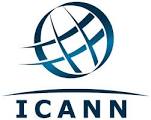 Following the request of the National Telecommunications and Information Administration (NTIA) for ICANN “convene a multistakeholder process to develop a plan to transition the U.S. government stewardship role” with regard to the IANA Functions and related root zone management, a Cross Community Working Group (CWG) was tasked with developing to produce a consolidated transition proposal for the elements of the IANA Functions relating to the Domain Name System (DNS).
Following the request of the National Telecommunications and Information Administration (NTIA) for ICANN “convene a multistakeholder process to develop a plan to transition the U.S. government stewardship role” with regard to the IANA Functions and related root zone management, a Cross Community Working Group (CWG) was tasked with developing to produce a consolidated transition proposal for the elements of the IANA Functions relating to the Domain Name System (DNS).
The CWG has now published its draft transition proposal [PDF, 1.72 MB] for public comment.
Public Comment Box Link: https://www.icann.org/public-comments/cwg-naming-transition-2014-12-01-en
This public consultation is part of the process associated with the March 14, 2014, U.S. Department of Commerce announcement of its intent to transition key Internet domain name functions (or the Internet Assigned Numbers Authority (IANA) Functions) to the global multistakeholder community. This draft transition proposal is the result of work by the Domain Name System (DNS) community (the names community) to meet the requirements associated with this transition as defined by the IANA Stewardship Transition Coordination Group (ICG). For additional information on the transition process please see https://www.icann.org/stewardship-accountability.
The CWG is looking forward to the results of this public consultation on any elements of the current proposal in order to aid it in finalizing the key aspects of its transition proposal and, to this end, some specific open issues are highlighted and specific questions are highlighted below. However, in presenting this draft proposal in its current form, the CWG is mindful that there are some who are of the view that alternatives to (rather than refinements of) this proposal should still be considered. The CWG remains open to hearing these views.
Summary of the transition proposal
At a high level, the transition proposal seeks to create four structures to replace the oversight role played by the NTIA in the execution of the IANA Naming Functions. Certain key aspects of the NTIA‘s current role, such as its role in approving changes to the Root Zone and its role as a backstop, are still under consideration by this CWG and may result in additions to this proposal.
- Contract Co. – This primary function of this entity (likely a non-profit corporation) is to be signatory to the contract with the IANA Functions Operator. This entity should be lightweight and have little or no staff.
- Multistakeholder Review Team (MRT) – The MRT would be a multi-stakeholder body with formally selected representatives from all of the relevant communities (exact composition TBD). The operation of the MRT would be based on the concept of maximum public transparency. The responsibilities of the MRT will include:
- Developing the detailed contract terms for the agreement between Contract Co. and the IANA Functions Operator, based on the key contract terms proposed as part of this proposal and set forth as Annex 3
- Making key decisions for Contract Co. (e.g., whether or not to enter into a rebidding (RFP) process for the operation of the IANA Naming Functions)
- Conducting the IANA Functions Operator Budget Review
- Addressing any escalation issues raised by the Customer Standing Committee (CSC) including the possibility of engaging in enforcement
- Performing certain elements of administration (including periodic performance reviews) currently set forth in the IANA Functions Contract and currently being carried out by the NTIA
- Managing a re-contracting or rebidding (RFP) process for the operation of the IANA Functions, both as an enforcement option and as part of a regular rebidding procedure
The CWG is in the process of discussing whether there is an additional enforcement role for the MRT related to policy implementation by the IANA Functions Operator; specifically, whether the MRT should be able to commence a proceeding before the Independent Appeals Panel.
- Customer Standing Committee (CSC) – While the exact composition is still to be determined, the CSC would primarily be made up of a number of representatives of registry operators, including ccTLD and gTLD registries. Input from the CSC would feed into and inform the work of the MRT. It is possible that the CSC would also include additional individuals with relevant expertise and/or liaisons (or representatives) from other SO/ACs. The CSC would:
- Work with the MRT to establish Service Levels and Performance Indicators for the performance of the IANA Naming Functions
- Receive reports from the IANA Functions Operator including regular performance reports.
- Review these reports against established service levels and escalate any significant issues to the MRT
- Independent Appeals Panel (IAP) – The CWG recommends that all IANA actions which affect the Root Zone or Root Zone WHOIS database be subject to an independent and binding appeals panel. The Appeals Mechanism should also cover any policy implementation actions that affect the execution of changes to the Root Zone File or Root Zone WHOIS and how relevant policies are applied. This need not be a permanent body, but rather could be handled the same way as commercial disputes are often resolved, through the use of a binding arbitration process using an independent arbitration organization (e.g., ICDR, ICC, AAA) or a standing list of qualified people under rules promulgated by such an organization.
 OnlineDomain.com Domain Name News & Opinions
OnlineDomain.com Domain Name News & Opinions


 OnlineDomain.com - © Copyright 2012-2025 - All Rights Reserved
OnlineDomain.com - © Copyright 2012-2025 - All Rights Reserved